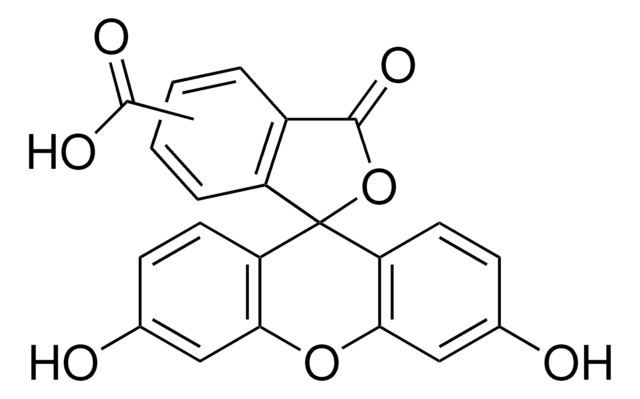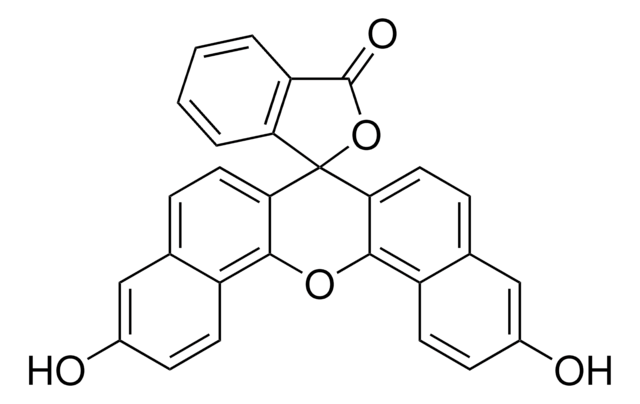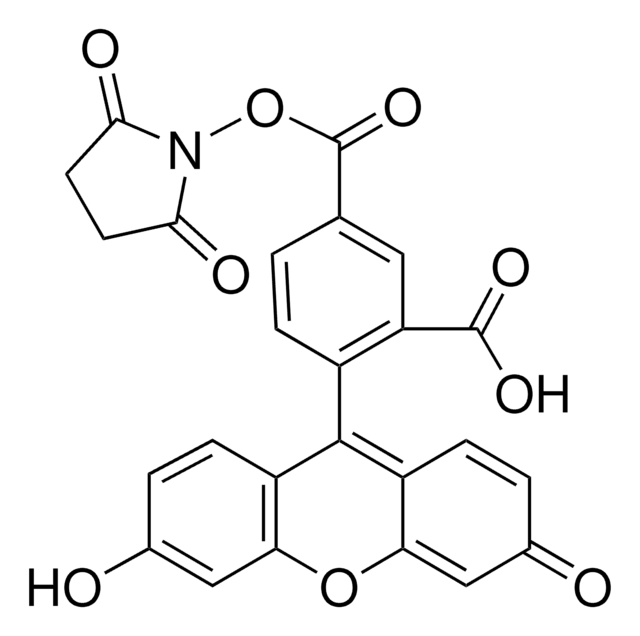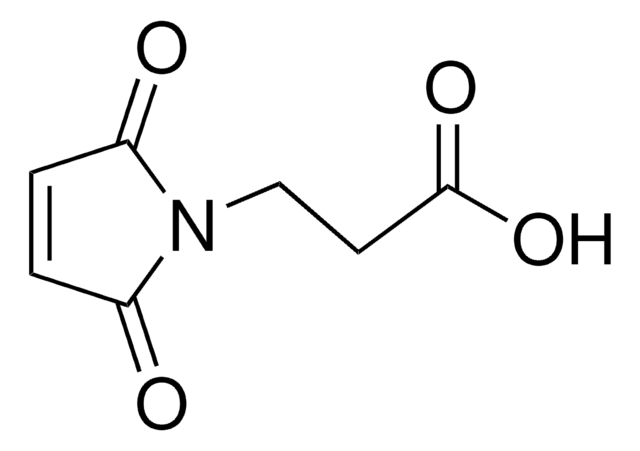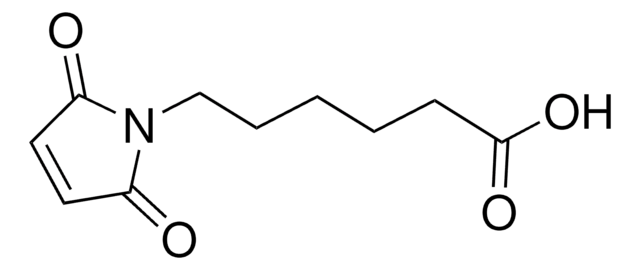Wichtige Dokumente
21932
5(6)-Carboxynaphthofluoreszein
BioReagent, suitable for fluorescence, ≥90% (HPLC)
About This Item
Empfohlene Produkte
Produktlinie
BioReagent
Qualitätsniveau
Assay
≥90% (HPLC)
Form
solid
pKa
7.6
Fluoreszenz
λex 512 nm; λem 567 nm (acid/neutral)
λex 598 nm; λem 668 nm (basic)
Eignung
suitable for fluorescence
SMILES String
OC(=O)c1ccc2c(c1)C(=O)OC23c4ccc5cc(O)ccc5c4Oc6c3ccc7cc(O)ccc67.OC(=O)c8ccc9C(=O)OC%10(c%11ccc%12cc(O)ccc%12c%11Oc%13c%10ccc%14cc(O)ccc%13%14)c9c8
InChI
1S/2C29H16O7/c30-17-4-6-19-14(11-17)1-9-23-25(19)35-26-20-7-5-18(31)12-15(20)2-10-24(26)29(23)22-8-3-16(27(32)33)13-21(22)28(34)36-29;30-17-4-7-19-14(11-17)2-9-22-25(19)35-26-20-8-5-18(31)12-15(20)3-10-23(26)29(22)24-13-16(27(32)33)1-6-21(24)28(34)36-29/h2*1-13,30-31H,(H,32,33)
InChIKey
ANUHNEJUELPITC-UHFFFAOYSA-N
Anwendung
Sie haben nicht das passende Produkt gefunden?
Probieren Sie unser Produkt-Auswahlhilfe. aus.
Lagerklassenschlüssel
11 - Combustible Solids
WGK
WGK 3
Flammpunkt (°F)
Not applicable
Flammpunkt (°C)
Not applicable
Persönliche Schutzausrüstung
Eyeshields, Gloves, type N95 (US)
Hier finden Sie alle aktuellen Versionen:
Besitzen Sie dieses Produkt bereits?
In der Dokumentenbibliothek finden Sie die Dokumentation zu den Produkten, die Sie kürzlich erworben haben.
Unser Team von Wissenschaftlern verfügt über Erfahrung in allen Forschungsbereichen einschließlich Life Science, Materialwissenschaften, chemischer Synthese, Chromatographie, Analytik und vielen mehr..
Setzen Sie sich mit dem technischen Dienst in Verbindung.